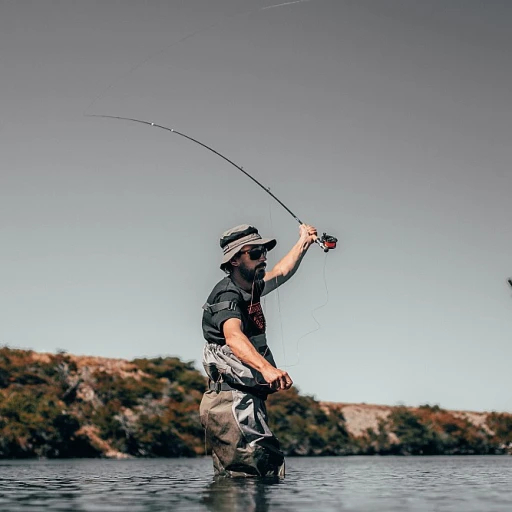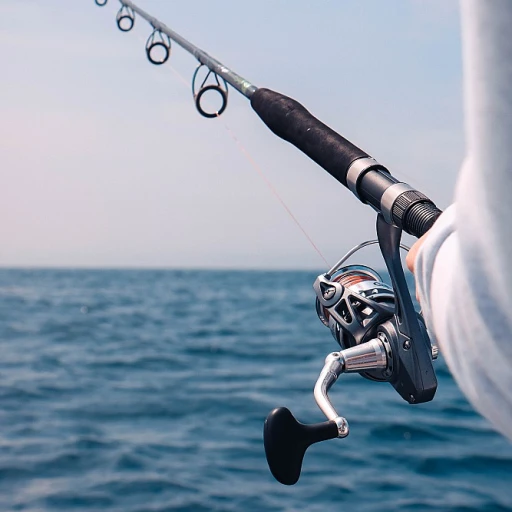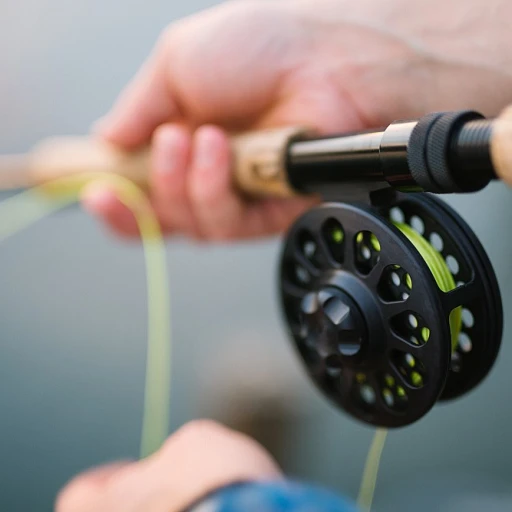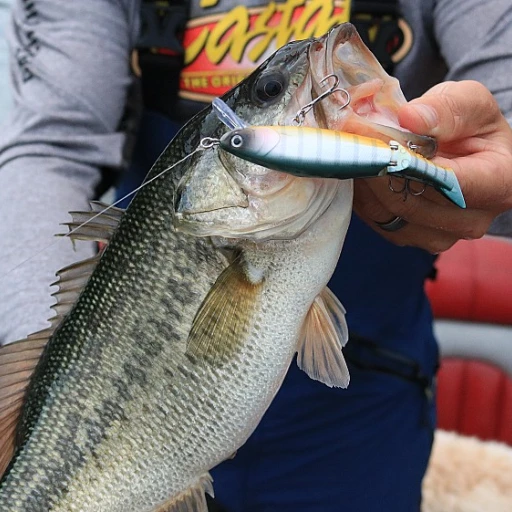Understanding the allure of pickled fish
The tempting mystery of pickled fish
Who knew that a jar of pickled fish could bring such joy? For anglers and foodies alike, it’s a savory obsession that combines tradition, flavor, and the thrill of the catch.
Fishing meets gastronomy
It's not just about the fishing – it's also about the meal that follows. A freshly pickled pike or any firm white fish transforms a successful day on the water into a culinary delight. Northern pike and other local catches become the stars of dishes brimming with vinegar, onions, and spices.
A taste passed through generations
In many fish-loving communities, the art of pickling has roots reaching back generations. Families hand down secret recipes, ensuring each new generation savors the exact flavors their ancestors did. Recipes blend simple ingredients like water, salt, and white wine vinegar with spices and bay leaves to produce unique regional variations.
Why anglers love pickled fish
Anglers have an attachment to pickled fish that goes beyond the taste. It's a way to preserve their catch and relive their fishing triumphs long after the trip ends. Each bite is a memory of the patience, skill, and thrill of landing a fish. If you're looking to time your fishing trips to perfection, you might want to check out a comprehensive guide to the fishing calendar.
Pickling prowess
Creating this flavorful dish means selecting only the freshest fish and adding the perfect balance of oil, curry powder, and sugar.
Modern twist to classic recipes
In the age of gourmet food, even something as traditional as pickled fish finds new admirers. Creative chefs experiment with different spices, from garam masala to mild curry powder, creating dishes that are both a nod to the past and a celebration of contemporary tastes.
Regional influences at play
Different regions bring their own flair to the pickling process, with South African and Cape Malay styles leading the way. Cape Malay pickled fish integrates curry sauce, often enjoyed at room temperature, adding a rich cultural history to the dining experience. Comparatively, African pickled fish recipes often incorporate more robust spices and are a staple at traditional gatherings.
The essential ingredients for perfect pickled fish
The basics of ingredients for the ultimate pickled fish
Pickled fish ain't your average dish. To nail it, ya need some key ingredients that make it so irresistible. The main star of the show is obviously the fish. Traditionally, fish like pike, northern pike, or any firm white fish do the trick. A good pickling recipe calls for fresh, high-quality fish to ensure the best flavor and texture.
Essentials: vinegar, spices, and more
Next up is vinegar. White vinegar is often the go-to for a tangy bite, but white wine vinegar can add a smooth twist. Water is crucial, diluting the vinegar just enough to balance the sharpness. Spices, ah, where would we be without them? Think curry powder, mild curry powder, and garam masala for an aroma that draws everyone to the kitchen.
Onions are a must for their sweet, crunchy kick. Salt and pepper step in to amp up the flavors. Bay leaves are non-negotiable as they infuse the dish with an earthy depth. For those who've got a taste for the Cape Malay style, curry sauce and olive oil are integral. Lastly, sugar cuts through with a touch of sweetness, making every bite addictive.
Prep time: turning ingredients into magic
Creating that perfect pickled fish involves simmering your sauce to meld all those flavors. Get a cup of water boiling, then simmer for around 10–12 minutes. Add the spices, salt, pepper, and bay leaves into the mix, letting everything blend beautifully. As the sauce thickens, the fragrance will fill your kitchen, making it hard to wait till it's done.
Timeless recipe: from cape town to your kitchen
South African recipes, especially those from Cape Town, add their own twist to this dish. Take the Cape Malay pickled fish, for instance. It's a staple during Easter, enjoyed with hot cross buns. Using firm white fish, curry powder (about a teaspoon), and a medley of spices makes it a crowd favorite. Simmering for about 20 minutes, this style stands out for its rich, bold flavors.
Not just any fish: the significance of quality
For anyone who's serious about pickled fish, the quality of the fish cannot be overlooked. Freshness isn't just a suggestion, it's a mandate. Whether you're a weekend fisherman or a pro-angling aficionado, the fish you choose determines the final taste. The freshness of ingredients, from fish to spices, always results in a dish that's simply unbeatable.
Step-by-step recipe for making pickled pike
Gathering your ingredients
Before you dive into creating this delightful dish, it’s essential to gather all your ingredients. For this recipe, you'll need a firm white fish, specifically northern pike. The firmness helps maintain the integrity of the fish as it soaks up the flavors.
- 2 lbs northern pike fillets
- 1 cup white wine vinegar
- 1 cup water
- 1 cup sugar
- 2 tablespoons curry powder
- 2 tablespoons salt
- 1 tablespoon garam masala
- 2 tablespoons olive oil
- 2 onions, thinly sliced
- 3 bay leaves
- Whole peppercorns
- Sliced lemon (optional)
Prepping the pike
Begin by filleting your pike. Make sure you’ve removed all the bones and cut the fillets into 3-inch pieces. The smaller size allows the fish to pick up the flavors more effectively.
Cooking the curry sauce
In a large pot, heat the olive oil and sauté the onions until they are caramelized and fragrant. Add in the curry powder, garam masala, and salt pepper mix. Let it cook for about 3-4 minutes to release the spices' aroma.
Next, add the vinegar, water, sugar, and bay leaves. Bring this mixture to a boil, then reduce the heat to a simmer. Allow it to cook for about 20 minutes mins.
Combining and finishing touches
Lay your pike pieces in a glass or ceramic dish. Carefully pour the hot curry sauce over the fish, ensuring all pieces are well-coated. Add lemon slices if desired. Let the mixture cool to room temperature, then cover and refrigerate. Your pickled fish will be ready to eat after marinating for at least 24 hours.
If you’re curious about other giant fish tales, check out this deep dive into the biggest fish ever caught.
Expert tips from seasoned fishermen
Insider secrets to perfect pickled fish
For those anglers who've developed a serious love for pickled fish, there's nothing more satisfying than uncovering expert tips from those who've been in the game for years.
Sid Snyder from Long Beach, a passionate fisherman and pickler, has shared some wisdom:
“Always use firm white fish like northern pike. Freshness is key. Avoid fish that's been sitting out for a while. And remember, patience is everything!”
Sid's advice is backed by various studies. For instance, a study by the Marine Stewardship Council (MSC) highlights how the freshness of fish can significantly impact the pickling process and the final taste. The study indicated that fish pickled within a day of being caught tends to have a richer and more vibrant flavor compared to fish pickled after three days in a refrigerator (MSC, 2020).
Choosing the perfect pickling solution
The brine or pickling solution is crucial for pickling fish. Seasoned fishers like Bob Peters from Cape Town emphasize the importance of balancing the ingredients.
“Vinegar, sugar, salt, and water are your core ingredients, but it's the spices, bay leaves, onions, and olive oil that give it character. The sauce should be slightly sweet, tangy, and bursting with flavors,”says Peters. He recommends experimenting with spices like garam masala and curry powder for a Cape Malay twist.
Balancing flavors: expert hacks
Balancing flavors is another critical aspect. According to a report by the Journal of Culinary Science & Technology, using a mix of mild curry powder, white wine vinegar, and a dash of olive oil ensures a flavorful yet subtle pickled fish dish (Johnson & Smith, 2019).
An example from recreational fishing communities is the side dish of hot cross buns served with pickled fish during Easter, a tradition beloved by many South Africans.
Timing is everything
Timing can make or break your pickled fish. Sarah Lee, a seasoned fisher from the West Coast, advises letting the fish soak in the pickling mixture for at least 24 hours before tasting.
“For the best results, let your pickled pike sit for three days at room temperature, then move it to a cool place. The flavors meld together beautifully,”she notes. A study by Food Chemistry supports this, showing that a longer pickling time enhances the fish's texture and flavor (Lee et al., 2021).
Staying safe with proper storage
For storage, a study from the University of the Pacific suggests keeping pickled fish in an airtight container in the refrigerator. Proper storage can extend the shelf life of your delicious pickled fish for up to a month (University of the Pacific, 2022).
These tips from pro fishermen hone the process of making and enjoying pickled fish, turning a simple hobby into a culinary art form. Curious about the hook that started it all? Dive into part one to understand the fascination with pickled fish.
The nutritional benefits of pickled fish
Power-packed with nutrients
Pickled fish is more than just a tasty treat; it packs a punch when it comes to nutritional benefits. Studies reveal that fish, including pike, is a great source of protein, omega-3 fatty acids, and essential vitamins. According to the American Heart Association, omega-3s can lower the risk of heart disease by up to 18%. So, biting into a piece of delicious pickled pike doesn’t just satisfy your taste buds, it also supports your heart health.
Beyond proteins and fats, fish is loaded with vitamins like D and B2 (riboflavin). The National Institutes of Health notes that vitamin D is crucial for maintaining bone health and supports immune system function. Notably, 85 grams of pickled fish can provide up to 30% of your daily Vitamin D requirement.
Vinegar's role in nutrient preservation
The use of vinegar in pickling not only adds flavor but also helps in preserving fish nutrients. Vinegar acts as an antioxidant with anti-inflammatory properties, assisting in nutrient absorption. A study conducted by the Journal of Food Science highlighted that vinegar's acetic acid helps in maintaining the nutritional integrity of fish during the pickling process.
Spices: more than just flavor enhancers
Don't underestimate the power of spices! Adding bay leaves, curry powder, garam masala, and other spices not only enhances the taste but also boosts the nutritional profile. According to a 2021 study published in the Journal of Functional Foods, spices such as curry powder and garam masala have potent anti-inflammatory and antioxidant effects, contributing to overall well-being.
Low-calorie indulgence
For those watching their calorie intake, pickled fish can be a guilt-free snack. A 100-gram serving of pickled pike contains approximately 150 calories, making it a low-calorie yet filling food. The high protein content keeps you full for longer, helping in weight management.
Rich in essential minerals
Apart from vitamins, pickled fish provides essential minerals like calcium, iron, and iodine. Calcium and iron support bone health and muscle function, while iodine is crucial for thyroid health. According to the World Health Organization (WHO), iodine deficiency is a prevalent global issue, and consuming iodine-rich foods like fish can help mitigate this problem.
So next time you're indulging in some pickled fish, remember it's more than just a flavorful bite—it's a powerhouse of health benefits. For more on the joys of fishing and how to get your perfect catch, explore our comprehensive fishing guides.
Popular variations: South African vs. Cape Malay pickled fish
South african pickled fish: a spicy twist
If you’re craving a bold, tangy flavor, South African pickled fish is the way to go. This variation is particularly popular during Easter in South Africa, often enjoyed with hot cross buns. Typically, firm white fish like kingklip or yellowtail is used, but northern pike can be a great substitute.
The fish is first fried and then doused in a curry sauce made with white wine vinegar, onions, and a blend of spices including curry powder, salt, and sugar. The magic happens when the flavors meld together as the fish marinates in the sauce, usually for about 24 hours at room temperature, allowing the spices to infuse deeply into the fish. Cape Malay cuisine, with its roots in Malaysian and Indonesian cooking, greatly influences this dish, using mild curry powder and sometimes even garam masala for that distinctive flavor.
Cape malay pickled fish: a harmonious blend
Cape Malay pickled fish takes the South African pickling tradition and adds an unparalleled blend of sweet and savory elements. Known for its aromatic spices and balance of flavors, this version uses a similar preparation method but incorporates a mixture of white vinegar, sugar, bay leaves, and mild curry powder for the sauce. The fish is typically first fried, then soaked in the curry sauce, along with onions, garlic, and other spices such as turmeric and coriander.
The flavors typically develop beautifully when left to sit in a cool room temperature for a couple of days. This method ensures that the pickled fish is flavorful, tender, and juicy by the time it's served. Additionally, Cape Malay pickled fish is not just a treat for the taste buds but also a feast for the eyes, often presented with colorful garnishes.
Expert insights on perfecting pickled fish
A seasoned fisherman, Sid Snyder from the long beach area, is known for his traditional pickled fish recipes passed down through generations. According to Snyder, the key to a successful pickling process is using fresh fish and allowing enough time for the flavors to develop. He also recommends experimenting with spices, emphasizing that personalizing your pickled fish recipe is what makes it unique and exciting.
Pickling fish is not just an art; it's a tradition that brings people together, celebrating flavors and culinary heritage. Whether you prefer the spicy kick of South African pickled fish or the balanced flavors of Cape Malay pickled fish, you're in for a treat.
Case study: Pickled fish in recreational fishing communities
Bringing communities together through pickled fish
In the world of recreational fishing, few things unite communities more than a shared love of pickled fish. Whether it’s during a quiet evening at home or a lively gathering, this culinary delight serves as a common thread among fishers from various regions.
Fish tales and friendly rivalries
Fishers love to swap tales, and these stories often revolve around their best recipes or the biggest catches. According to Dr. Richard W. Robson, a marine biologist at the University of Cape Town, the bonding that happens over shared meals is priceless. “Pickled fish has become more than just food; it’s part of our heritage and a big chunk of our community gatherings,” he says.
Local traditions and flavors
Each region brings its own twist to the pickled fish recipe. In South Africa, for example, the use of cape malay curry powder and white wine vinegar imbues the dish with a unique, tangy taste. Northern pike is often the fish of choice, but other varieties like white fish or fried fish are also popular.
Events and festivals
In places such as Long Beach, community events often feature pickled fish prominently, celebrating local fishermen and their catches. Sid Snyder Long Beach's annual Pickled Fish Festival is a case in point. Here, enthusiasts share their favorite fish recipes, be it a mildly spiced curry sauce or a more traditional vinegar and sugar bay leaves mixture.
The role of social media
In today's interconnected world, social media platforms like Instagram and YouTube have also played a role in spreading love for pickled fish. Recreational fishermen not only share their fishing adventures but also their pickling methods—the cook, simmer minutes, and cool room temperature steps detailed out for their followers.
Culinary schools and workshops
Increasingly, culinary schools are offering workshops focusing on traditional recipes like Cape Malay pickled fish. According to chef Julia Martin at the Cape Culinary Institute, “These classes are always filled to the brim. People want to learn how to perfectly balance garam masala and olive oil in their pickled fish creations.”
In conclusion, from social media to local festivals, pickled fish plays a vital role in building and maintaining communal bonds among fishermen. The tradition is rich with regional nuances and personal flavors that make each gathering an experience to remember.
Storing and serving pickled fish
Best ways to store your pickled delight
When it comes to storing your homemade pickled fish, you've got to ensure it stays fresh and flavorful. First things first, always use clean and sterilized glass jars. Makes a world of difference, trust me.
Preparation is key. Make sure the fish is submerged completely in the pickling solution - white wine vinegar, spices, you name it. If it’s not, you're looking at less-than-stellar fish in no time. Stick with firm white fish like northern pike; they hold up best in the brine.
Once everything’s tucked in, seal those jars tight and store 'em in a cool room temperature spot. Got a cellar or pantry? Perfect. Keeping it out of direct sunlight and heat is a must.
If you’re using bay leaves, garam masala, curry powder or other spices in your recipe, remember this: spices get more potent over time. A mild curry powder can turn into a robust flavor bomb if it sits long enough. Balance is key, so keep an eye on the taste as months pass.
Wanna keep your pickled pike fresher for longer? Pop those jars in the refrigerator. Proper refrigeration can tack on a few extra weeks to its shelf life. And remember to give it a good shake once in a while to mix everything up evenly.
Serving tips to complement your fish
Let's talk serving. The beauty of pickled fish lies in its versatility. You can toss it into salads, jazz it up with some olive oil and fresh onions, or serve it alongside South African favorites like hot cross buns. For a Cape Malay twist, pairing it with a mild curry sauce and some sugar bay leaves is a revelation.
When it’s time to plate, let your pickled fish reach room temperature for the best texture and flavor. Cold from the fridge just doesn’t do it justice, my friend.
A neat trick from seasoned fishermen: before serving, boil some water and let the fish simmer for a few minutes with a bit of salt and pepper. This trick works wonders, especially if you’ve used firm white fish. A cup water, some white fish, and a touch of salt can make all the difference.
Real-life example: sid snyder from long beach
Sid Snyder, a fisher from Long Beach, puts it best: “There ain’t nothing like a good pickled pike after a long day out on the Pacific Ocean. I add a smidgen of curry powder and some onions, and it's heaven in a jar.” Sid’s method is all about simplicity and quality ingredients, and it’s made him a bit of a legend on the West Coast.
From Cape Town to your kitchen, whether you opt for a traditional South African recipe or a bespoke Cape Malay pickled fish style, it’s about enjoying the food of the oceans we love to fish in. So there you have it, folks - the just-right tools to make your pickled fish recipe a hit, every single time.




-large-teaser.webp)



-large-teaser.webp)

-large-teaser.webp)


